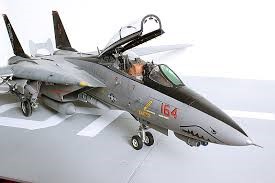The Daily Dish
April 18, 2019
What Do We Learn When the ITC Uses CGE to Inform USMCA Impacts?
Eakinomics: What Do We Learn When the ITC Uses CGE to Inform USMCA Impacts?
Good morning! Let us begin with a guide to today’s acronyms:
CGE – Computable General Equilibrium
GDP – Gross Domestic Product
ITC – United States International Trade Commission
IMF – International Monetary Fund
NAFTA – North American Free Trade Agreement
TPA – Trade Promotion Authority
TPP – Trans Pacific Partnership
USMCA – United States-Mexico-Canada Agreement
With that out of the way, let’s look ahead: The trade community is eagerly anticipating the release of the ITC report on USMCA. When the president was given fast-track TPA in 2015, the law stipulated that an ITC assessment of the economic impact of a particular trade agreement must be submitted to Congress 105 days after the United States signs it. The government shutdown slowed this work, but the research is expected this week.
What will we really learn from the ITC’s USMCA report? Probably not much that matters. The United States is a (very) large economy, a dozen times larger than Canada, which is, in turn, 50 percent larger than Mexico. Anything applied to them equally will have relatively small impacts on the United States and relatively bigger effects on Canada and Mexico. That was the basic story when NAFTA was passed. Indeed, to my eye, the most important aspect of NAFTA for the United States was not the direct economic benefits but the fact that it solidified a democratic ally on the southern border.
Now that NAFTA is in place, one would expect that the incremental macro impacts would be smaller yet. That is why a recent IMF study concluded the the USMCA would have “negligible” effects on GDP. Indeed, when the ITC took a look at the TPP — which covered nine additional nations above the USMCA — the impact was to raise U.S. GDP by only 0.15 percent over 15 years.
But the main reason that the estimated macro impact will be small is that the ITC will rely on its CGE modeling — a computer simulation model of the three economies and the rules that govern trade — to quantify the impact. It cannot be emphasized enough that models are not reality. Models are highly simplified frameworks that focus on certain aspects of reality — but deliberately omit others.
DIGRESSION ON MODELS: Here’s an example to make the point. If you want to have a “model” of what fighter plane looks like, buy this:
It is a great model for understanding how design changes, paint choices, and decals affect appearance. But don’t try to fly it — it will crash to the ground and smash into dozens of pieces. If you want a “model” of how a fighter plane flies, buy this:
It doesn’t look like much, but it can help you understand how design changes affect flight. Models are built to study specific aspects of reality and not the whole thing. END OF DIGRESSION.
CGE models are really good for studying the macro impact of taxes, tariffs, increases in labor supply, investment, and opening trade itself. They are less useful in understanding what happens when trade is already established, tariffs largely eliminated, and the bulk of the agreement is focused on intricate changes in the rules of the road in financial services, telecommunications, digital trade, intellectual property protections, and other areas. As it turns out, those more intricate changes are exactly the strengths of the USMCA.
There will be nothing wrong with the ITC report. It will be comprehensive, professionally executed, and even-handed. But it won’t illuminate everything about adoption of the USMCA.
Fact of the Day
The U.S. Individual Income Tax Return, which more than 150 million filers submit annually, costs Americans a collective 1.8 billion hours per year.












